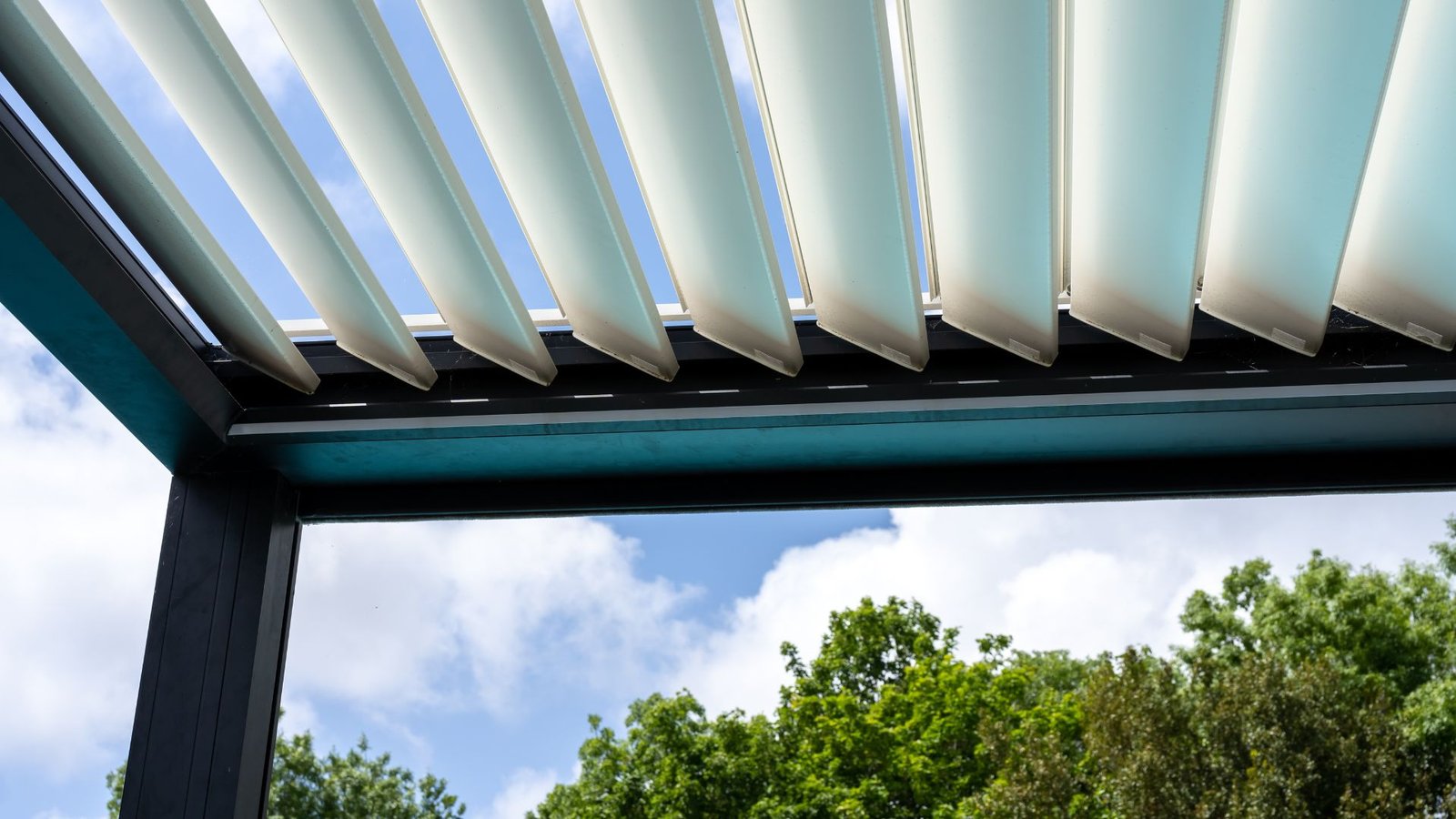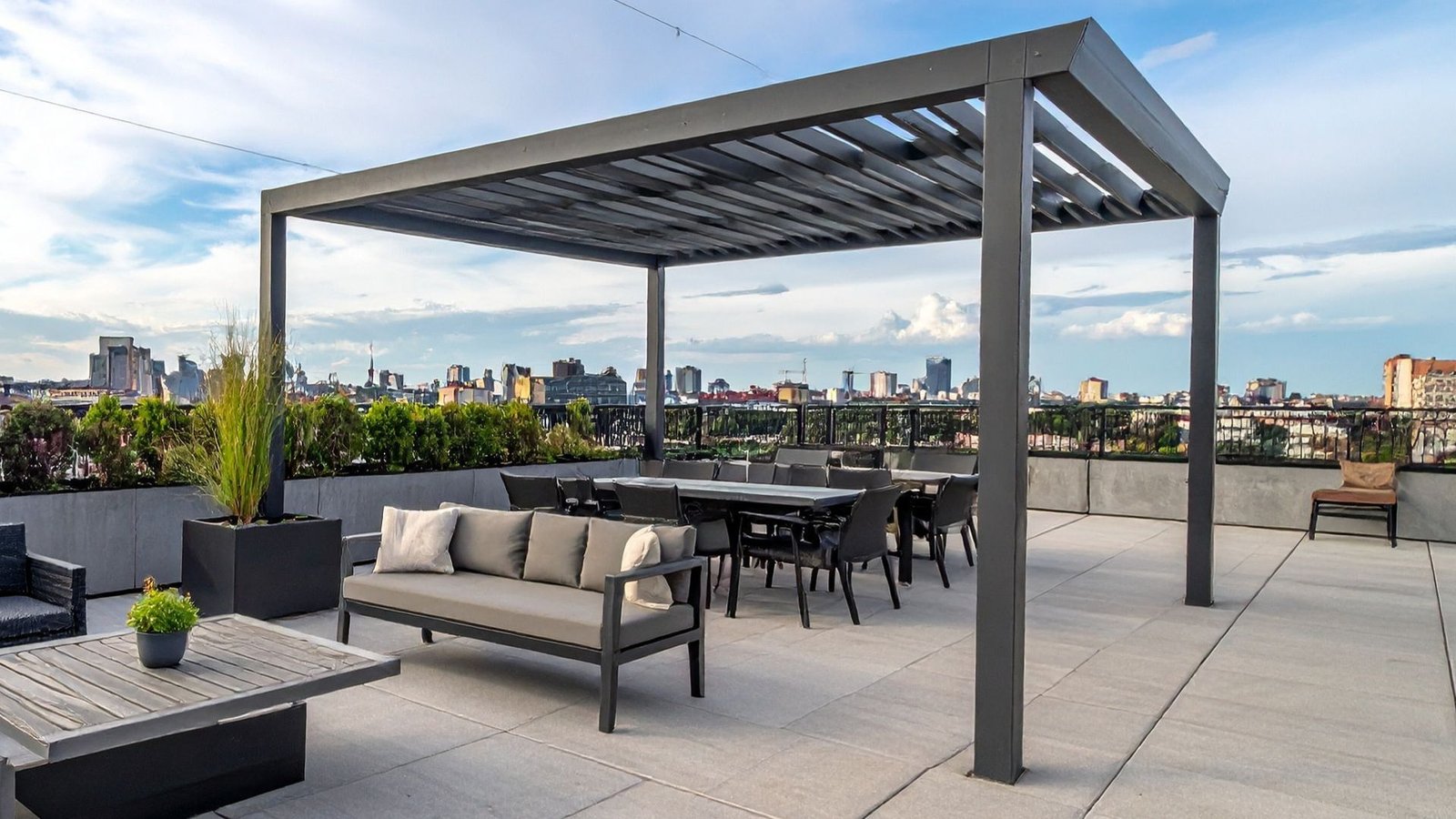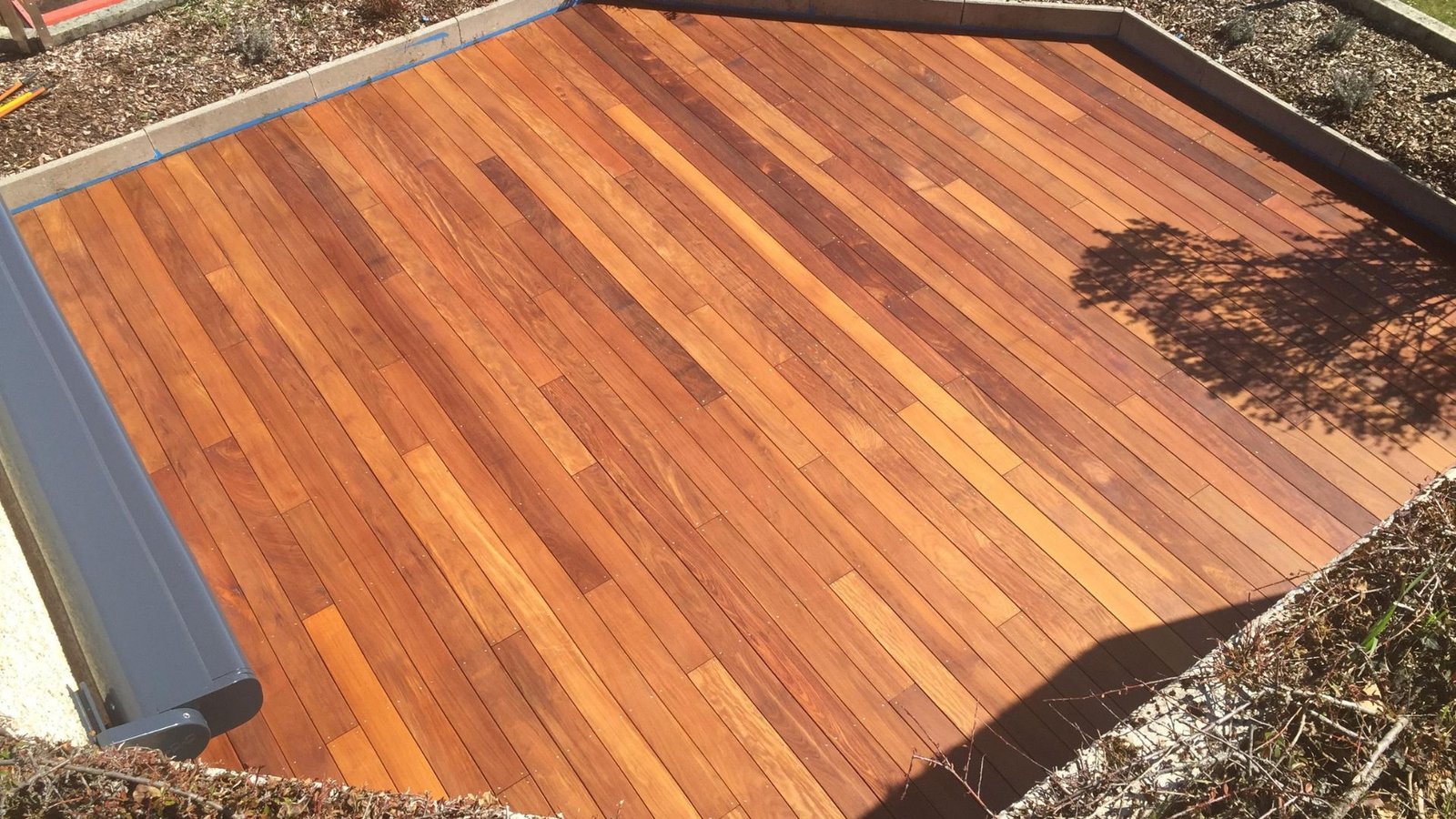Welcome to our guide on choosing the perfect color to paint your concrete fence posts. Whether you’re looking to refresh the look of your garden or enhance your home’s curb appeal, selecting the right color can make all the difference. In this post, we’ll explore a variety of color options, from classic neutrals to bold statements, that can transform your concrete fence posts into an attractive feature of your outdoor space. We’ll also cover practical tips, painting techniques, and how to avoid common mistakes, ensuring that your posts not only look great but are protected from the elements for years to come. So, let’s dive in and discover the best color ideas to elevate your outdoor design.
The best color to paint concrete fence posts depends on your home’s exterior style, landscape, and personal taste. Neutral tones like gray, beige, or white offer a classic, versatile look, while earthy tones like brown or terracotta blend well with natural surroundings. For a bold statement, consider darker shades like black or navy, which create a modern contrast. Always choose weather-resistant masonry or exterior paint to ensure durability and protection from the elements. Proper preparation, including cleaning and priming, is key to a long-lasting finish.
Table of Contents
Why Paint Your Concrete Fence Posts
Painting your concrete fence posts is more than just an aesthetic choice; it provides essential benefits that can protect your investment and improve the look of your property.
Durability and Protection
Concrete is known for its strength, but it’s not immune to the effects of weather, moisture, and UV rays. Over time, exposure to the elements can cause cracking, fading, and even structural damage. Applying a coat of high-quality paint acts as a protective barrier, shielding the concrete from harsh weather conditions. Paint helps to seal the porous surface of concrete, preventing moisture from seeping in, which can lead to cracks or erosion during freeze-thaw cycles. Additionally, it guards against the harmful effects of UV rays, which can cause fading and degradation over time.
Enhancing Aesthetics
A plain concrete fence post may do the job, but it won’t necessarily enhance your outdoor space. Painting these posts gives you an opportunity to elevate the look of your yard or garden. Whether you opt for neutral tones that blend seamlessly into your surroundings or bold colors to make a statement, painted concrete fence posts can complement your overall landscape design. They can transform your fence into a feature rather than just a functional barrier.
Increasing Property Value
First impressions matter when it comes to property value. A well-maintained, aesthetically pleasing exterior can significantly impact the appeal of your home. By painting your concrete fence posts, you not only enhance the curb appeal but also potentially increase the overall value of your property. Buyers are often drawn to homes that have clear attention to detail, and a fresh coat of paint on your fence posts can contribute to that.

Factors To Consider When Choosing A Color For Your Fence Posts
Choosing the right color for your fence posts can elevate the aesthetic of your home, creating harmony between the house, garden, and overall outdoor environment. Here are key factors to consider when making this decision.
Consider Your Home’s Exterior Style
The color of your fence posts should complement the architectural style of your home. For modern or contemporary homes, neutral tones like gray, black, or white often work well, offering a sleek, minimalist look. On the other hand, if you have a cottage-style home, softer shades such as pastel blues, earthy greens, or even natural wood stains can enhance the cozy, rustic feel. The goal is to either blend the fence posts seamlessly with your home or create a tasteful contrast that adds character without clashing.
Look at the Landscaping
Your fence posts don’t exist in isolation; they should also harmonize with the surrounding landscape. If your yard is lush with greenery, flowers, or intricate garden designs, the fence color can either blend in or stand out. Earthy tones like browns, tans, or greens tend to integrate naturally into a garden space. Alternatively, if you want the fence posts to pop, consider brighter hues or even contrasting shades like deep blues or vibrant reds to create a focal point against a lush, green backdrop.
Local Climate and Sun Exposure
The climate and sun exposure in your area can significantly impact the longevity of your fence post color. In regions with intense sun, lighter colors such as white, beige, or light gray are ideal as they reflect heat and are less prone to fading. Conversely, darker colors like black, deep brown, or navy might fade more quickly in areas with heavy sun exposure. In wetter or more temperate climates, earthier shades that camouflage dirt and weathering may be a better fit.
Personal Preferences and Style
Ultimately, the color of your fence posts should resonate with your personal style. If you’re someone who loves making bold statements, deep hues like charcoal, navy, or even a striking red can make your fence posts stand out. If you lean towards a minimalist or understated look, neutral colors or soft pastels might be more up your alley. Keep in mind that this is an extension of your home, and it should reflect your taste while complementing the surrounding environment. By taking into account these factors your home’s exterior, landscaping, climate, and personal preferences you can select a fence post color that not only enhances your property but also reflects your unique style.

Popular Color Choices For Concrete Fence Posts
When designing your outdoor space, the color of your fence posts can play a key role in enhancing the overall look and feel of your property. Concrete fence posts are sturdy, durable, and incredibly versatile, making them an ideal choice for many homeowners. But what about their color? Choosing the right shade can either blend harmoniously with your home’s design or create a bold focal point. In this guide, we’ll explore some of the most popular color choices for concrete fence posts, from timeless neutrals to bold, unconventional hues. Whether you’re going for subtle elegance or a striking statement, there’s a color choice to suit your style.
Neutral Tones: Gray, Beige, Taupe, and White
Neutral tones remain a top choice for concrete fence posts, and it’s easy to see why. Shades like gray, beige, taupe, and white offer a classic, timeless appeal that fits seamlessly into almost any environment. These colors are prized for their versatility, effortlessly complementing various architectural styles and landscaping designs.
Gray, in particular, works well with modern and industrial aesthetics, blending effortlessly with the natural look of concrete. Beige and taupe, on the other hand, bring warmth and subtle elegance, making them ideal for more traditional or transitional homes. Meanwhile, white offers a crisp, clean look that brightens up any yard and pairs well with virtually any other color, including greenery and wooden accents.
The beauty of neutral tones is that they serve as a backdrop rather than a focal point, allowing other elements of your yard, such as plants, garden furniture, or decorative accents, to take center stage. These shades also minimize the risk of your fence posts clashing with surrounding features, making them a safe and smart choice for those seeking understated sophistication.
Earthy Tones: Brown, Terracotta, and Olive
For homeowners who prefer a more natural, grounded aesthetic, earthy tones like brown, terracotta, and olive are perfect options. These colors evoke the warmth and richness of nature, making them especially suited for properties with rustic or naturalistic garden designs.
Brown and terracotta shades can create a sense of warmth and cohesion in outdoor spaces, seamlessly blending with wooden fences, stone pathways, or lush greenery. Olive, a muted green shade, complements natural surroundings, offering a calming, organic feel that integrates with both lawns and garden beds. These tones not only harmonize with nature but also help to establish a cozy, welcoming atmosphere, making them perfect for homes with a more laid-back, earthy charm.
Choosing earthy tones for your concrete fence posts is an excellent way to create a visually cohesive outdoor space, particularly if your garden or landscape is designed with natural materials and textures.
Bold and Contrasting Colors: Black, Dark Green, and Navy
For homeowners looking to make a strong, modern statement, bold and contrasting colors like black, dark green, and navy are fantastic choices. These deep hues lend an air of sophistication and can create a striking visual contrast against lighter-colored fencing, plants, or even the sky.
Black, in particular, has become a popular choice in modern landscape design. It provides a sleek, contemporary look and can make other elements, such as garden features or plants, pop in contrast. Dark green and navy offer a similar effect but with a slightly softer, more nature-inspired feel. These bold colors are perfect for those who want their fence posts to stand out as a design feature rather than blend into the background.
When paired with lighter fencing or lush greenery, these dark hues create a dynamic contrast that draws the eye and adds depth to your landscape design.
Pastels and Soft Colors: Light Blue, Soft Green, and Lavender
If you’re going for a softer, more whimsical look, pastels and soft colors like light blue, soft green, and lavender are excellent choices. These shades are perfect for cottage-style gardens or homes with a relaxed, charming ambiance.
Light blue and soft green can evoke feelings of calm and serenity, while lavender brings a touch of romance and playfulness. These gentle hues are ideal for homeowners looking to create an inviting, dreamlike outdoor space. Pastels can also add a pop of color without being overpowering, making them great for smaller yards or spaces where you want a light, airy feel.
Unconventional Choices: Bright Red, Yellow, and Turquoise
For those who want to make a bold, creative statement, unconventional colors like bright red, yellow, or turquoise can turn your concrete fence posts into a true focal point. These vibrant shades are perfect for homeowners looking to express their individuality and add an element of surprise to their landscape.
However, it’s important to note that bold and unusual colors may require more maintenance over time. Bright hues are more susceptible to fading due to sun exposure, meaning they might need regular touch-ups to maintain their vibrancy. While these colors can create a standout look, they also demand a bit more care and attention in the long run. Choosing the right color for your concrete fence posts can transform your outdoor space, whether you’re aiming for subtle elegance, natural warmth, or bold expression. Neutral tones offer timeless versatility, while earthy hues create a grounded, natural feel. Dark and bold shades make a striking modern statement, pastels add softness and charm, and unconventional colors allow you to showcase your creativity. Whatever your vision, there’s a color choice that will elevate your landscape and enhance the beauty of your home.
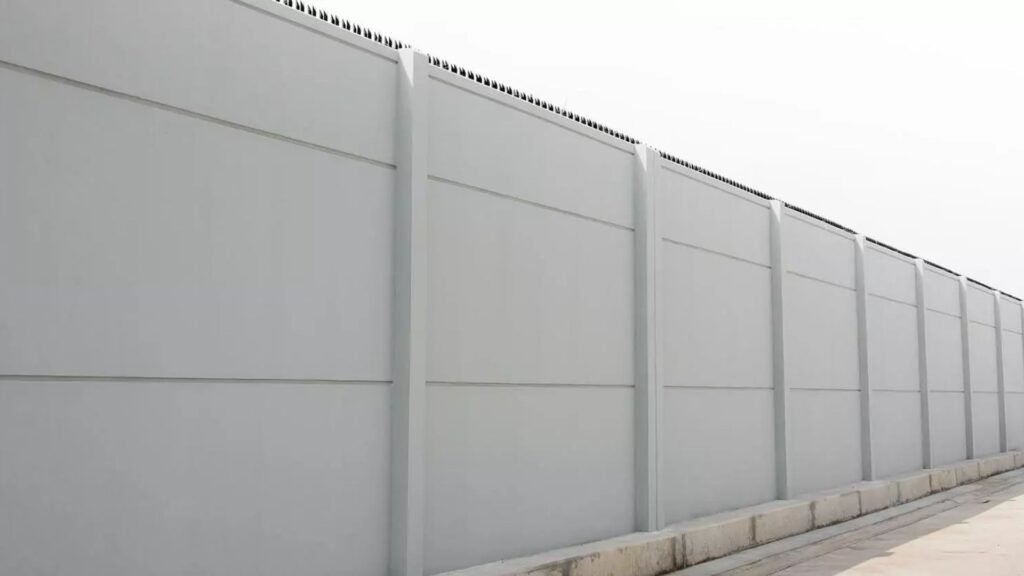
Step-By-Step Guide To Painting Concrete Fence Posts
Concrete fence posts can provide a durable and attractive addition to any property, but over time, exposure to the elements can leave them looking worn or discolored. A fresh coat of paint can restore their appearance and protect them from further weathering. Here’s a detailed, step-by-step guide on how to paint your concrete fence posts for long-lasting results.
Preparation is Key
Before you dive into painting your concrete fence posts, proper preparation is essential. This phase ensures that your paint job lasts longer and looks professional.
Cleaning the Posts
The first step is cleaning the surface. Over time, concrete can accumulate dirt, moss, and even remnants of old paint. These can prevent new paint from adhering properly, so it’s critical to remove all debris. You can use a stiff-bristled brush to scrub the surface manually or, for more effective cleaning, employ a power washer. A power washer will remove stubborn moss and grime more efficiently. If using a power washer, be careful not to damage the concrete with too much pressure. Once the surface is clean, allow it to dry thoroughly. Any moisture trapped under the paint can lead to peeling or bubbling later on.
Sanding and Smoothing
After cleaning, inspect the posts for cracks or holes. Concrete surfaces often have imperfections, and painting over them without filling can result in an uneven finish. Use a concrete patching compound to fill any cracks or holes. After it dries, sand the surface smooth using medium-grit sandpaper. This will help create an even, polished surface for the primer and paint to adhere to.
Priming
Priming is a crucial step that should not be overlooked. A high-quality, concrete-specific primer will not only help the paint adhere better but will also enhance the longevity of the paint job. Apply a coat of primer evenly across the post, and make sure to get into any grooves or uneven areas. Let the primer dry completely before moving on to the next step. Priming also acts as a sealant, preventing moisture from seeping into the concrete.
Choosing the Right Paint
Not all paints are suitable for concrete surfaces, so choosing the right one is vital for achieving a durable, weather-resistant finish.
Types of Paint
- Masonry Paint: Designed specifically for exterior concrete and brick surfaces, masonry paint is highly durable and weather-resistant.
- Epoxy-Based Paint: Known for its strong adherence and long-lasting finish, epoxy-based paint is a great option for concrete surfaces. It offers excellent resistance to wear and tear.
- Acrylic Latex Paint: This is another popular option due to its flexibility and UV resistance. Acrylic latex paint is breathable, which helps to prevent peeling, especially in areas with high humidity.
Whichever paint you choose, make sure it is labeled for outdoor use and includes UV protection. This will help the color remain vibrant and prevent cracking or fading over time.
Painting the Posts
Once your surface is prepared and you’ve chosen the right paint, it’s time to start painting.
Applying the Paint
Start by applying the first coat of paint using a roller or brush. For large, flat areas, a roller will help you cover more ground quickly, while a brush is ideal for smaller sections and detailed areas. If you’re working on a large number of posts or want a more uniform finish, consider using a paint sprayer, which will provide faster, even coverage.
Make sure the first coat is applied evenly and allow it to dry completely, typically around 24 hours, depending on the paint and weather conditions. After the first coat has dried, apply a second coat for maximum coverage and durability. In some cases, especially with lighter colors, a third coat may be necessary.
Drying Time
It’s important to allow adequate drying time between coats. While it may be tempting to rush the job, letting each layer dry properly ensures a smooth, durable finish. Depending on weather conditions, it can take 24 to 48 hours for each coat to fully cure. Be mindful of the weather forecast, as rain or extreme humidity can affect the drying process.
Finishing Touches
Sealing for Extra Durability
Once you’ve completed the painting process, consider adding a weatherproof sealer for extra protection. A clear, UV-resistant sealer will help preserve the color and protect the posts from rain, snow, and harsh sunlight. This is especially useful in regions with extreme weather conditions.
Maintenance and Touch-Ups
To keep your concrete fence posts looking their best, regular maintenance is key. Inspect them annually for signs of wear or peeling. If needed, lightly sand any peeling spots and apply touch-up paint. Regular touch-ups will keep your posts looking fresh and extend the life of your paint job.
Painting concrete fence posts may seem like a straightforward task, but proper preparation and the right materials are crucial for achieving long-lasting results. By following this step-by-step guide, you can ensure your fence posts not only look great but are well-protected from the elements for years to come.

Common Mistakes To Avoid In Painting Concrete Fence Posts
When painting concrete surfaces, avoiding common mistakes can make all the difference in achieving a durable and professional finish. Here are some key errors to steer clear of.
- Skipping the Primer: One of the biggest mistakes people make is skipping the primer. Priming concrete is essential because it ensures the paint adheres properly and creates a smooth, even surface. Without a primer, the paint can chip, peel, or wear off quickly, leading to frequent touch-ups and a poor overall appearance.
- Using the Wrong Paint Type: Not all paints are designed for concrete, especially outdoor surfaces. It’s crucial to use paint that is specifically formulated for concrete and can withstand harsh weather conditions. For example, indoor paints or those not intended for outdoor use will break down when exposed to moisture, sunlight, and temperature fluctuations. Choosing the right paint will ensure your finish is both long-lasting and resistant to the elements.
- Rushing the Drying Process: Patience is key when painting concrete. Rushing the drying time between coats can compromise the integrity of the finish. If the paint hasn’t fully cured, it becomes prone to cracking, peeling, or developing a rough texture. Always follow the recommended drying time between layers to guarantee a smooth, durable surface.
- Ignoring Weather Conditions: Weather plays a critical role in the success of your project. Painting in direct sunlight, extreme heat, or high humidity can cause the paint to dry too quickly or unevenly. This results in streaks, bubbles, or an unsightly finish. Ideally, choose a mild day with low humidity to ensure the paint dries evenly for the best possible results.
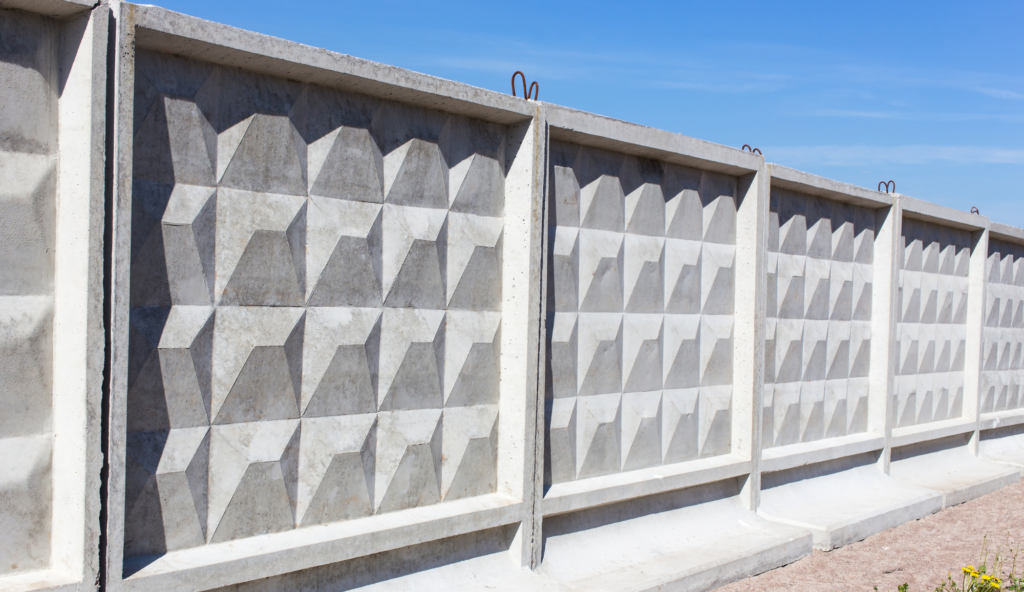
FAQs: About What Colour To Paint Concrete Fence Posts
How long does paint last on concrete fence posts?
The lifespan of paint on concrete fence posts can vary depending on the quality of the paint, the preparation work, and exposure to weather. Generally, high-quality masonry or exterior paint can last anywhere from 5 to 10 years with proper maintenance. Regular cleaning, touch-ups, and protective sealants can extend the life of the paint.
Do I need to prime concrete fence posts before painting?
Yes, priming is essential when painting concrete. A good primer designed for masonry or concrete helps the paint adhere better, prevents moisture damage, and ensures a longer-lasting finish. Skipping this step can lead to peeling or uneven coverage.
What type of paint should I use on concrete fence posts?
It’s recommended to use masonry paint, epoxy-based paint, or acrylic latex paint for concrete fence posts. These paints are formulated to handle the porous surface of concrete and withstand outdoor conditions, such as UV rays, rain, and temperature changes.
Can I paint my concrete fence posts a dark color?
Absolutely! Dark colors like black, navy, or dark green can create a bold, modern statement and work particularly well in contemporary settings. Just be aware that dark colors may absorb more heat and could fade faster in direct sunlight, so it’s important to choose a UV-resistant paint.
How should I prepare my concrete fence posts for painting?
Preparing the surface is crucial for a smooth and lasting finish. Start by cleaning the posts thoroughly to remove dirt, moss, and old paint. You can use a power washer or a stiff brush with soap and water. After cleaning, repair any cracks or holes with a concrete filler and sand the surface if needed. Once dry, apply a coat of primer before painting.
What should I do if my painted fence posts start to peel?
If the paint begins to peel, it’s often due to poor surface preparation or moisture issues. To fix it, scrape off the peeling paint, clean the surface, and sand it down to create a smooth area. Reapply primer and then paint the posts again. Consider adding a protective sealer for additional durability.
How many coats of paint should I apply to concrete fence posts?
Typically, two coats of paint are recommended for concrete fence posts. The first coat provides a base, and the second coat ensures even coverage and a rich color. Make sure to let each coat dry completely before applying the next, following the manufacturer’s instructions.
Can I paint concrete fence posts in cold or wet weather?
It’s best to avoid painting in cold or wet conditions, as this can affect the paint’s ability to adhere to the concrete. Ideally, paint when temperatures are between 50°F and 85°F (10°C and 30°C), and the humidity is low. Always check the weather forecast to ensure that rain won’t wash away the paint before it has a chance to dry.
How can I prevent my painted concrete fence posts from fading?
To prevent fading, use a high-quality, UV-resistant exterior paint. Applying a clear weatherproof sealer on top of the paint can also provide extra protection from sun exposure and rain. Regular maintenance, like cleaning the posts and touching up faded areas, can help keep the paint vibrant for longer.
Are there eco-friendly paint options for concrete fence posts?
Yes, there are eco-friendly paint options available for concrete surfaces. Look for paints that are low in VOCs (volatile organic compounds) and environmentally friendly. Some manufacturers offer water-based masonry paints that are safer for the environment while still providing good durability and weather resistance.
Conclusion
In conclusion, selecting the perfect color for your fence posts is crucial to enhancing the overall look of your home. It’s essential to consider factors such as your home’s exterior design, the surrounding environment, and your personal style preferences. While practicality is key, don’t be afraid to get creative and experiment with colors that can make your fence stand out or blend in harmoniously. By keeping these tips in mind, you can transform your outdoor space with a fresh coat of paint. We’d love to hear your thoughts, experiences, or ideas in the comments or on social media let us know how your next project turns out.
About the Author:
Mike Veail is a recognized digital marketing expert with over 6 years of experience in helping tradespeople and small businesses thrive online. A former quantity surveyor, Mike combines deep industry knowledge with hands-on expertise in SEO and Google Ads. His marketing strategies are tailored to the specific needs of the trades sector, helping businesses increase visibility and generate more leads through proven, ethical methods.
Mike has successfully partnered with numerous companies, establishing a track record of delivering measurable results. His work has been featured across various platforms that showcase his expertise in lead generation and online marketing for the trades sector.
Learn more about Mike's experience and services at https://theleadguy.online or follow him on social media:



